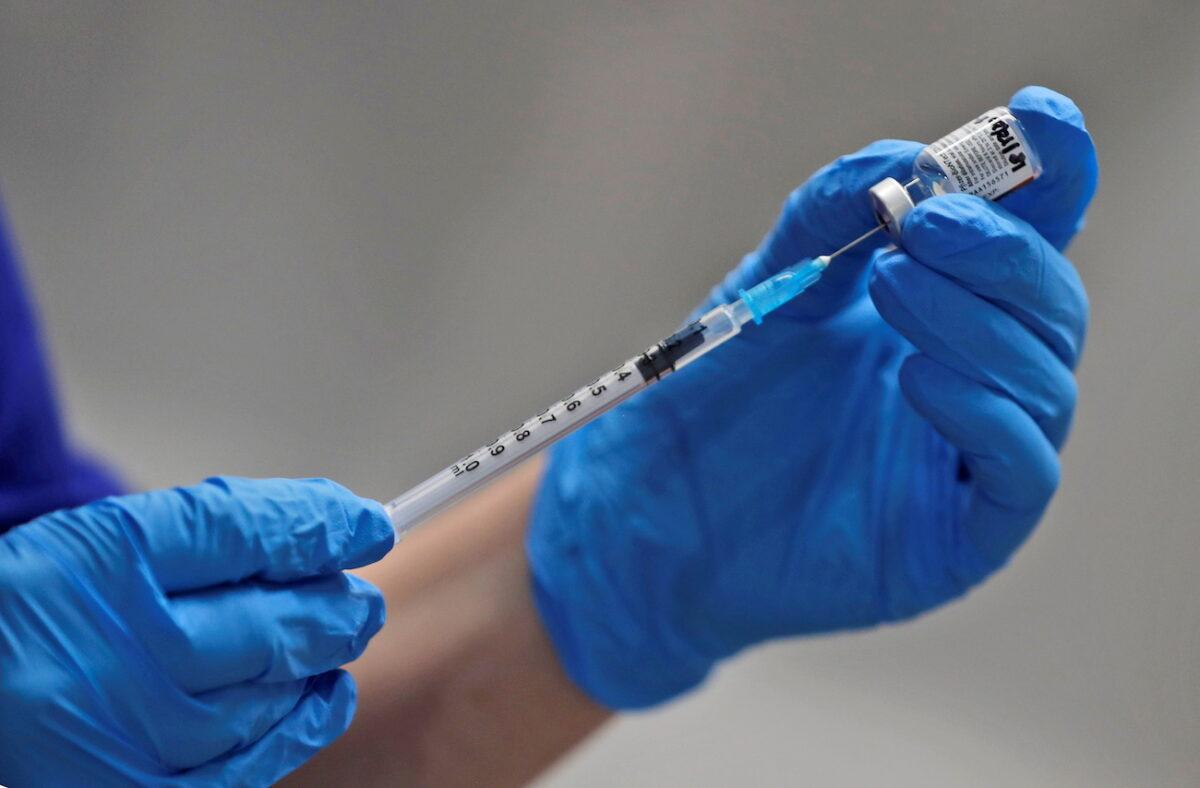The Trump administration plans to buy another 100 million doses of Moderna’s COVID-19 vaccine, according to the Department of Health and Human Services (HHS).
“Securing another 100 million doses from Moderna by June 2021 further expands our supply of doses across the Operation Warp Speed portfolio of vaccines,” said HHS Secretary Alex Azar, in a statement.
Called mRNA-1273, the Moderna vaccine is pending approval for emergency use, with a review by the Food and Drug Administration (FDA) expected on Dec. 17. Once it’s approved, the vaccine will begin shipping immediately and will be provided at no cost to Americans.
“This new federal purchase can give Americans even greater confidence we will have enough supply to vaccinate all Americans who want it by the second quarter of 2021,” Azar said.
The Trump administration previously ordered 100 million doses of Moderna’s vaccine, which the company began manufacturing while clinical trials were still underway. Running development and manufacturing processes in parallel is part of the strategy to make COVID-19 vaccines and therapeutics available in record time.
The vaccine was co-developed by Moderna and scientists from the National Institute of Allergy and Infectious Diseases (NIAID), the agency headed by Dr. Anthony Fauci.
An independent data safety monitoring board overseeing the clinical trial of Moderna’s vaccine candidate reviewed the trial data and concluded that the vaccine was safe, prevented disease in 94 percent of the volunteers who received the vaccine, and was generally well tolerated.
Moderna is the second company to apply to the FDA for emergency use authorization, with the Pfizer/BioNTech vaccine receiving the final go-ahead on Dec. 12.
Army Gen. Gustave Perna, who heads the Trump administration’s Operation Warp Speed initiative, said trucks would begin rolling out on Dec. 13 as shipping companies UPS and FedEx begin delivering the Pfizer/BioNTech vaccine to nearly 150 distribution centers across the country, with the nation’s first COVID-19 vaccine starting to arrive in states on Dec. 14.
An additional 450 or so distribution centers will get the vaccine on Dec. 15 and Dec. 16, with about 3 million doses expected to be shipped nationwide at the outset.
Perna said health authorities would decide who gets priority access to the vaccine, which is administered in two doses, about three weeks apart.

Regarding safety, the FDA reviewed data from some 38,000 participants aged 16 and older, and found “a favorable safety profile, with no specific safety concerns identified that would preclude issuance of an EUA [emergency use authorization],” according to the analysis.
The analysis did note, however, that, “there are currently insufficient data to make conclusions about the safety of the vaccine in subpopulations such as children less than 16 years of age, pregnant and lactating individuals, and immunocompromised individuals.”
People who took part in the study did experience a number of side effects after taking the vaccine, with the FDA noting the most common were injection site reactions (84.1 percent), fatigue (62.9 percent), headache (55.1 percent), muscle pain (38.3 percent), chills (31.9 percent), joint pain (23.6 percent), and fever (14.2 percent).





